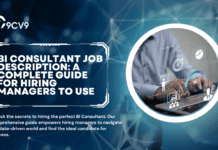Key Takeaways
- Professional achievements are measurable outcomes that highlight skills, impact, and contributions beyond standard job responsibilities.
- Identifying and documenting achievements with clear metrics strengthens resumes, interviews, and personal branding.
- Effectively communicating achievements boosts career growth, recognition, and long-term professional success.
In today’s competitive professional landscape, the distinction between an average employee and a standout performer often lies in their professional achievements. Professional achievements are tangible or measurable successes that demonstrate an individual’s ability to deliver results, drive growth, and contribute meaningfully to their organization. Unlike routine job responsibilities or daily tasks, which are expected as part of any role, professional achievements reflect exceptional performance, creativity, and problem-solving capabilities that set a candidate apart in the eyes of employers, peers, and industry leaders.

Understanding professional achievements is crucial not only for career advancement but also for effective personal branding. They serve as proof of an individual’s skills, expertise, and value, providing concrete evidence that complements a resume, cover letter, or LinkedIn profile. Employers increasingly seek candidates who can not only perform their duties but also bring measurable impact to their teams. For instance, successfully leading a project that increases revenue, implementing a system that reduces operational costs, or receiving an award for outstanding performance are all examples of professional achievements that illustrate real-world results.
Moreover, professional achievements play a pivotal role in career growth, from securing promotions to negotiating higher salaries. They allow professionals to articulate their contributions confidently during performance reviews or interviews, showcasing how their efforts have produced tangible outcomes. In a broader sense, professional achievements contribute to reputation building, demonstrating consistency, reliability, and excellence over time.
The process of identifying and documenting these achievements requires careful reflection, self-assessment, and strategic communication. Many professionals struggle to differentiate between day-to-day responsibilities and achievements, which can lead to underrepresentation of their true value. By learning how to recognize, quantify, and communicate accomplishments effectively, individuals can maximize career opportunities and position themselves as top candidates in competitive job markets.
This guide explores the concept of professional achievements in detail, examining what they are, why they matter, and how they work. It will provide actionable insights into identifying achievements, documenting them with measurable results, and presenting them strategically to enhance professional credibility. By understanding the mechanics of professional achievements, professionals can leverage their past successes to shape a more compelling career narrative and unlock new opportunities for growth and recognition.
Before we venture further into this article, we would like to share who we are and what we do.
About 9cv9
9cv9 is a business tech startup based in Singapore and Asia, with a strong presence all over the world.
With over nine years of startup and business experience, and being highly involved in connecting with thousands of companies and startups, the 9cv9 team has listed some important learning points in this overview of What are Professional Achievements & How Do They Work.
If you are looking for a job or an internship, click over to use the 9cv9 Job Portal to find your next top job and internship now.
Email [email protected] now for career and job finding services.
Or hope over to 9cv9 Job Placement Services for Professionals to learn how to get hired and find a high-paying job.
What are Professional Achievements & How Do They Work
- Understanding Professional Achievements
- The Significance of Professional Achievements
- How to Identify Your Professional Achievements
- Effectively Communicating Achievements
- Common Mistakes to Avoid
1. Understanding Professional Achievements
Defining Professional Achievements
- Professional achievements are measurable outcomes or notable successes that demonstrate an individual’s ability to exceed expectations, deliver results, and create a meaningful impact in their workplace. Unlike regular job responsibilities, achievements highlight a professional’s distinct contributions, problem-solving capabilities, and value-add to the organization.
- Examples include:
- Successfully launching a new product that increased company revenue by 15% within six months.
- Streamlining operational workflows, reducing project completion time by 20%.
- Receiving recognition through awards, certifications, or promotions for exceptional performance.
Distinguishing Achievements from Responsibilities
- Responsibilities refer to the duties or tasks expected of a role. Achievements, on the other hand, are measurable outcomes that go beyond these duties.
- Example matrix:
| Role Responsibility | Professional Achievement | Outcome |
|---|---|---|
| Manage client accounts | Increased client retention by 30% through personalized engagement strategies | Demonstrated measurable business impact |
| Prepare monthly reports | Automated reporting process, reducing preparation time from 10 hours to 3 hours | Improved efficiency and productivity |
| Conduct team meetings | Initiated team knowledge-sharing sessions that increased project delivery accuracy | Enhanced team performance and collaboration |
Key Characteristics of Professional Achievements
- Measurable: Achievements are quantifiable with metrics, percentages, or timelines that illustrate tangible results.
- Action-Oriented: They stem from proactive initiatives and strategic actions taken to achieve a goal.
- Impactful: Achievements should demonstrate meaningful contributions that benefit the organization, team, or clients.
- Recognized: They often receive acknowledgment through promotions, awards, certifications, or public recognition.
Examples Across Different Industries
- Sales: Exceeding quarterly sales targets, securing high-value clients, or launching successful campaigns.
- Technology: Developing software features that reduce system errors by 25% or leading successful cloud migration projects.
- Human Resources: Implementing recruitment strategies that decrease time-to-hire by 40% or enhancing employee retention programs.
- Marketing: Leading campaigns that improve conversion rates by 20% or increasing social media engagement significantly.
Visual Representation of Achievement Types
Achievement Type Matrix:
| Type | Example | Measurement Metric |
|---|---|---|
| Revenue Impact | Exceeded sales targets | % increase in sales |
| Efficiency | Process automation | Time saved (hours) |
| Recognition | Industry awards | Number of awards/acknowledgments |
| Innovation | New product launch | Market share growth |
| Leadership | Project team management | Team performance improvement |
By understanding professional achievements in detail, professionals can distinguish their contributions from routine responsibilities, quantify their impact, and present a compelling narrative to employers. Documenting these achievements strategically not only strengthens resumes and profiles but also positions individuals for promotions, career growth, and industry recognition.
2. The Significance of Professional Achievements
Demonstrating Skills and Expertise
- Professional achievements serve as concrete evidence of an individual’s capabilities, expertise, and skillset. They provide measurable proof that a professional can deliver results beyond standard job expectations.
- For example, a software engineer who develops a tool that reduces system downtime by 40% demonstrates not only technical expertise but also problem-solving and innovation skills.
- Key skills often highlighted through achievements include leadership, project management, analytical thinking, and strategic execution.
Enhancing Career Advancement Opportunities
- Achievements play a pivotal role in career growth by differentiating high performers from their peers. Professionals who can showcase measurable successes are more likely to be considered for promotions, salary increases, or strategic assignments.
- Example: An HR manager who implements a recruitment process that reduces hiring time by 50% may be promoted to head of talent acquisition due to demonstrated efficiency and strategic impact.
- Table: Career Impact of Professional Achievements
| Achievement Example | Demonstrated Skill | Potential Career Benefit |
|---|---|---|
| Led project reducing operational costs by 25% | Strategic thinking, leadership | Promotion to operations manager |
| Increased client retention by 30% | Client relationship management | Recognition as top performer, eligibility for bonus |
| Launched successful marketing campaign improving conversions by 20% | Creativity, marketing analytics | Career growth, leadership of larger campaigns |
Strengthening Personal Branding and Professional Reputation
- Documenting and communicating achievements enhances personal branding by positioning professionals as results-driven, reliable, and capable of creating measurable impact.
- LinkedIn profiles, resumes, and professional portfolios benefit from the inclusion of achievements, as they provide concrete examples rather than vague statements of responsibility.
- Example: A project manager who includes achievements such as “Successfully managed a cross-functional team to deliver a $2 million project ahead of schedule” positions themselves as a high-value candidate in the industry.
Influencing Hiring and Performance Evaluations
- Employers and managers rely on professional achievements to evaluate potential hires and assess current employees. Achievements provide a clear picture of past performance, predicting future contributions.
- Example: During performance evaluations, an employee who has successfully reduced customer complaints by 35% demonstrates tangible results that support merit-based recognition and career development opportunities.
- Chart: Influence of Achievements on Career Evaluation
| Evaluation Aspect | Role of Achievements | Outcome |
|---|---|---|
| Recruitment | Showcase measurable results in applications | Higher interview selection rate |
| Performance Review | Demonstrate exceeded expectations | Increased bonuses, promotions |
| Networking & Reputation | Highlight impact in professional platforms | Recognition as industry expert |
Driving Motivation and Professional Growth
- Achievements create a sense of accomplishment and motivate professionals to continue pursuing excellence. They serve as benchmarks for setting future goals and identifying areas for improvement.
- Example: An employee who receives recognition for developing an innovative sales strategy may be encouraged to propose additional initiatives, leading to sustained growth and continuous professional development.
By understanding the significance of professional achievements, individuals can strategically focus on creating, documenting, and communicating their successes. Achievements not only enhance career prospects but also strengthen personal branding, validate professional skills, and drive ongoing growth and recognition within an industry.
3. How to Identify Your Professional Achievements
Reflecting on Past Roles and Responsibilities
- Begin by reviewing each role you have held, focusing on the outcomes of your actions rather than the tasks themselves. Professional achievements are results-oriented, so identifying what you contributed that went beyond daily responsibilities is key.
- Example: If you managed a team responsible for monthly reporting, consider whether you implemented a new reporting system that reduced errors or improved efficiency. This outcome constitutes a measurable achievement.
- Action steps for reflection:
- List all positions held with key responsibilities.
- Highlight projects or tasks where you exceeded expectations.
- Note instances of recognition, awards, or promotions linked to your contributions.
Reviewing Performance Evaluations and Feedback
- Performance reviews, manager feedback, and peer recognition are rich sources of professional achievements. They provide documented evidence of your impact and the value you bring to an organization.
- Example: Annual reviews indicating that you “consistently exceeded targets” or “improved team collaboration” can be translated into quantifiable achievements such as “Increased quarterly sales by 25% through improved client engagement strategies.”
- Table: Translating Feedback into Achievements
| Feedback Statement | Potential Achievement | Measurable Metric |
|---|---|---|
| Exceeded client expectations | Secured high-value client accounts | Revenue growth or client retention % |
| Improved operational efficiency | Streamlined internal processes | Reduction in time/cost by X% |
| Recognized for leadership | Led cross-functional project | Project completed ahead of schedule or under budget |
Quantifying Achievements with Metrics
- Achievements are most impactful when they are measurable. Identify metrics that reflect your contributions, such as percentages, revenue growth, cost reductions, time savings, or customer satisfaction improvements.
- Example: A marketing professional who initiated a campaign may quantify their achievement as “Increased website traffic by 35% over three months, generating 200 qualified leads.”
- Chart: Example Metrics for Common Professional Achievements
| Achievement Type | Metric Examples | Measurement Method |
|---|---|---|
| Sales | Revenue increase, client acquisition | CRM systems, sales reports |
| Operations | Efficiency improvement, cost reduction | Project reports, time tracking |
| Project Management | Timely delivery, team performance | Milestone tracking, KPIs |
| Customer Service | Customer satisfaction, complaint resolution | Surveys, feedback forms |
| Innovation | New product or process implementation | Market impact, adoption rate |
Documenting Achievements Regularly
- Maintain a record of achievements throughout your career rather than waiting for performance reviews. This practice ensures that accomplishments are accurately captured and quantified.
- Action steps:
- Keep a running document or portfolio of key achievements.
- Include the project name, objective, actions taken, and results achieved.
- Update this record monthly or quarterly to reflect ongoing contributions.
Using Self-Assessment Tools and Reflection Exercises
- Self-assessment frameworks, such as SWOT analysis (Strengths, Weaknesses, Opportunities, Threats), can help identify areas where your efforts produced measurable results.
- Example: Through a SWOT analysis, an employee may recognize that their strength in data analysis contributed to a 20% reduction in project errors, which can be highlighted as a professional achievement.
Leveraging Peer and Manager Input
- Seeking feedback from colleagues, mentors, or supervisors can uncover achievements you might overlook. Sometimes the impact of your work is more evident to others.
- Example: A team member might highlight that your initiative in introducing a new collaboration tool significantly improved project timelines, which can then be documented as a concrete achievement.
By systematically reflecting on roles, quantifying contributions, and using feedback and documentation, professionals can effectively identify their achievements. This process not only strengthens career profiles but also ensures a ready record of accomplishments for resumes, interviews, performance reviews, and professional growth planning.
4. Effectively Communicating Achievements
Articulating Achievements with Clarity
- Clearly communicating professional achievements requires presenting accomplishments in a concise, results-oriented manner. Avoid vague descriptions and focus on specific outcomes that demonstrate impact.
- Example: Instead of stating, “Managed a team project,” a stronger articulation would be, “Led a cross-functional team of 10 to deliver a $1.5 million project two weeks ahead of schedule, improving client satisfaction by 15%.”
- Action steps for clarity:
- Begin with a strong action verb such as “led,” “implemented,” “streamlined,” or “initiated.”
- Include the scope of responsibility, quantifiable results, and impact on the organization.
- Avoid listing routine tasks; focus on measurable contributions.
Quantifying Achievements for Maximum Impact
- Metrics provide credibility and context to your achievements, allowing employers or evaluators to understand the tangible impact of your work.
- Example: A sales professional can communicate, “Increased regional sales by 25% in six months, adding $500,000 in revenue,” rather than simply saying, “Increased sales.”
- Table: Examples of Metrics for Different Roles
| Role | Achievement Statement | Metric for Communication |
|---|---|---|
| Sales | Expanded client base | Number of new accounts, revenue increase |
| Operations | Reduced processing time | % decrease in cycle time, hours saved |
| Marketing | Boosted campaign engagement | % increase in leads or conversions |
| Human Resources | Improved employee retention | % decrease in turnover rate |
| Technology | Enhanced system performance | % reduction in errors, downtime |
Tailoring Achievements to the Audience
- The way achievements are communicated should vary based on the audience, whether it is a hiring manager, recruiter, executive, or peer.
- Example:
- Resume: Focus on concise, quantifiable statements.
- Interview: Provide context and narrate the challenges, actions, and results.
- Performance review: Highlight achievements in alignment with organizational goals and personal KPIs.
- Chart: Communication Channels vs. Achievement Presentation
| Channel | Recommended Approach | Key Focus |
|---|---|---|
| Resume | Bullet points with metrics | Concise, measurable outcomes |
| LinkedIn/Profile | Narrative with quantifiable results | Storytelling combined with credibility |
| Interview | STAR method (Situation, Task, Action, Result) | Context and problem-solving |
| Performance Review | Alignment with goals and KPIs | Strategic impact and measurable contribution |
Using the STAR Method for Interviews
- STAR (Situation, Task, Action, Result) is a structured technique for communicating achievements effectively in interviews:
- Situation: Set the context or challenge.
- Task: Describe your responsibility.
- Action: Explain what steps you took.
- Result: Present measurable outcomes and impact.
- Example: “In a situation where client deadlines were consistently missed (Situation), I was tasked with improving project timelines (Task). I implemented a new project tracking tool and held weekly team check-ins (Action), resulting in a 20% improvement in on-time delivery and increased client satisfaction by 18% (Result).”
Showcasing Achievements Across Platforms
- Resume: Use concise, metric-driven bullet points for clarity and impact.
- LinkedIn/Profile: Expand on achievements with context, challenges overcome, and lessons learned to engage a professional audience.
- Portfolios: Provide tangible examples such as project screenshots, reports, or campaign results.
- Presentation or Public Speaking: Highlight key achievements that demonstrate leadership, influence, or innovation, ensuring relevance to the audience.
Avoiding Common Communication Pitfalls
- Overgeneralizing or exaggerating achievements reduces credibility.
- Focusing solely on individual accomplishments without acknowledging team efforts may appear self-centered.
- Neglecting to include measurable outcomes diminishes the impact of achievements.
By effectively communicating achievements using clear, quantified, and tailored approaches, professionals can strengthen their career profiles, improve interview performance, and build credibility across professional networks. Strategic communication ensures that accomplishments are recognized and valued, positioning individuals for career advancement and industry recognition.
5. Common Mistakes to Avoid
Listing Responsibilities Instead of Achievements
- A frequent mistake professionals make is confusing routine job responsibilities with achievements. While responsibilities demonstrate what is expected of a role, achievements reflect measurable outcomes and the value added to the organization.
- Example: Saying “Managed customer accounts” is a responsibility. Transforming it into an achievement would be, “Managed 15 client accounts, increasing overall client retention by 25% over one year.”
- Table: Responsibilities vs. Achievements
| Role | Responsibility Statement | Achievement Statement |
|---|---|---|
| Sales | Managed sales pipeline | Closed 10 high-value deals generating $500,000 in revenue |
| Marketing | Created social media content | Increased social media engagement by 40% and lead generation by 25% |
| Operations | Coordinated team schedules | Streamlined scheduling process, reducing downtime by 15% |
Failing to Quantify Achievements
- Achievements lose impact when they are not measurable. Quantifying results provides credibility and clarity to your accomplishments. Without metrics, even significant contributions may appear vague.
- Example: Instead of stating, “Improved team performance,” quantify it: “Implemented a mentorship program that increased team productivity by 20% within six months.”
- Chart: Impact of Quantified vs. Non-Quantified Achievements
- Non-Quantified: “Managed a project successfully” → Unclear impact.
- Quantified: “Led a project that cut production costs by 15% in three months” → Clear, measurable impact.
Overlooking Soft Skills as Achievements
- Professionals often neglect soft skills such as leadership, communication, or teamwork. These skills can be framed as achievements if they produce measurable or notable outcomes.
- Example: “Fostered cross-department collaboration, resulting in faster project completion and improved team cohesion.”
- Matrix: Soft Skills Translated into Achievements
| Soft Skill | Example Achievement | Measurable Outcome |
|---|---|---|
| Leadership | Mentored junior team members | Reduced onboarding time by 30% |
| Communication | Streamlined client reporting process | Improved client satisfaction scores by 20% |
| Collaboration | Led interdepartmental workshops | Increased project completion rate by 25% |
Failing to Update Achievements Regularly
- Many professionals document achievements sporadically or only during performance reviews. This can lead to forgotten accomplishments or underrepresentation of recent successes.
- Example: A marketing specialist who launched a high-impact campaign six months ago may forget to include it on their resume or LinkedIn profile if not recorded immediately.
- Action steps to avoid this:
- Maintain a running record of all notable contributions.
- Update quarterly to capture recent projects and measurable outcomes.
- Include both small wins and major accomplishments to demonstrate consistent impact.
Overemphasizing Team Achievements Without Individual Contribution
- While teamwork is important, failing to specify your individual role within team achievements can dilute the perceived value of your contributions.
- Example: Instead of stating, “Our team improved customer satisfaction,” clarify your role: “Led the customer support initiative that reduced response time by 30%, contributing to overall team improvement in satisfaction scores.”
Exaggerating or Misrepresenting Achievements
- Overstating contributions or presenting inaccurate metrics can harm credibility and damage professional reputation. Honesty is critical when communicating achievements.
- Example: Claiming, “Increased revenue by 100% single-handedly” when it was a team effort is misleading. Correct articulation would be, “Contributed to a team effort that increased revenue by 100% over six months through targeted client strategies.”
Neglecting Alignment with Career Goals or Job Relevance
- Achievements are most effective when relevant to career objectives or the target job. Including unrelated accomplishments can distract from key strengths.
- Example: Highlighting a technical innovation is highly relevant for an engineering role but less impactful when applying for a marketing position unless the skill demonstrates transferable expertise.
By recognizing and avoiding these common mistakes, professionals can ensure that their achievements are accurately represented, measurable, relevant, and credible. Avoiding these pitfalls strengthens resumes, professional profiles, and interview narratives, ensuring that accomplishments are communicated with maximum impact.
Conclusion
Professional achievements are the cornerstone of career advancement and personal branding in today’s competitive workplace. Unlike routine responsibilities, achievements provide tangible evidence of an individual’s ability to deliver results, demonstrate expertise, and make meaningful contributions to an organization. They serve as measurable markers of success, showcasing not only technical skills but also leadership, problem-solving, innovation, and strategic thinking. Understanding how professional achievements work allows individuals to distinguish themselves from peers, enhance career prospects, and position themselves as high-value contributors within their industries.
Identifying professional achievements begins with self-reflection, careful review of past roles, and evaluation of feedback from managers, peers, or mentors. By analyzing performance outcomes, measuring tangible results, and documenting successes systematically, professionals can create a comprehensive record of accomplishments. This record becomes a powerful tool for resumes, interviews, performance reviews, and professional portfolios, enabling individuals to communicate their value with confidence and clarity.
Effectively communicating achievements is equally critical. Utilizing clear language, action-oriented statements, and quantifiable metrics ensures that accomplishments resonate with hiring managers, executives, and industry peers. Methods such as the STAR technique—highlighting Situation, Task, Action, and Result—allow professionals to present achievements in a structured, compelling manner that demonstrates problem-solving capabilities and measurable impact. Tailoring communication to specific audiences, whether for resumes, LinkedIn profiles, interviews, or performance evaluations, maximizes the visibility and credibility of professional achievements.
Avoiding common mistakes is vital to maintaining authenticity and impact. Overgeneralizing responsibilities, neglecting quantification, ignoring soft skills, failing to update achievements, or exaggerating results can undermine credibility. By carefully documenting and presenting achievements while emphasizing measurable outcomes and individual contributions, professionals can ensure that their successes are accurately recognized and valued.
In essence, professional achievements are not merely records of past performance; they are strategic assets that shape career trajectories, open new opportunities, and reinforce professional credibility. By understanding what constitutes an achievement, identifying them systematically, and communicating them effectively, individuals can transform their career narratives into compelling stories of impact, excellence, and measurable success. Professionals who leverage these principles consistently are better positioned to achieve recognition, advancement, and sustained growth within their chosen fields.
If you find this article useful, why not share it with your hiring manager and C-level suite friends and also leave a nice comment below?
We, at the 9cv9 Research Team, strive to bring the latest and most meaningful data, guides, and statistics to your doorstep.
To get access to top-quality guides, click over to 9cv9 Blog.
To hire top talents using our modern AI-powered recruitment agency, find out more at 9cv9 Modern AI-Powered Recruitment Agency.
People Also Ask
What are professional achievements?
Professional achievements are measurable successes that show how you added value in your role, such as increasing sales, improving efficiency, or earning recognition.
Why are professional achievements important?
They highlight your impact beyond daily responsibilities, strengthen your resume, and make you stand out in competitive job markets.
How do professional achievements differ from responsibilities?
Responsibilities are tasks expected of your role, while achievements are outcomes that demonstrate results and measurable contributions.
What are examples of professional achievements?
Examples include exceeding sales targets, reducing costs, launching new products, improving processes, or receiving awards.
How can I identify my professional achievements?
Reflect on past roles, review performance feedback, and note instances where your work led to measurable improvements or recognition.
How do I quantify professional achievements?
Use metrics like percentages, revenue growth, cost savings, time reduction, or client retention rates to measure success.
How should I list achievements on my resume?
Use concise bullet points with action verbs and measurable results, such as “Increased sales by 20% within six months.”
What is the best way to communicate achievements in interviews?
Use the STAR method: explain the Situation, Task, Action, and Result to highlight impact and measurable outcomes.
Are soft skills considered professional achievements?
Yes, if they lead to measurable results, such as improved teamwork reducing project delays or communication enhancing client satisfaction.
Can entry-level professionals have achievements?
Yes, achievements can include academic awards, internships, volunteer work, or impactful contributions to small projects.
How do achievements help in career advancement?
They demonstrate your ability to deliver results, making you more competitive for promotions, raises, and leadership opportunities.
What are common mistakes when listing achievements?
Mistakes include listing duties instead of outcomes, failing to quantify results, and exaggerating accomplishments.
How can professional achievements improve LinkedIn profiles?
Achievements strengthen credibility, showcase expertise, and make your profile attractive to recruiters and hiring managers.
Why should achievements be updated regularly?
Regular updates ensure you capture recent successes, making resumes and profiles more accurate and impactful.
How do achievements influence performance reviews?
Achievements provide measurable proof of your contributions, supporting recognition, bonuses, and promotions during evaluations.
Can team achievements be listed as personal achievements?
Yes, but you must clearly state your role and individual contribution to the team’s success.
How do achievements contribute to personal branding?
They build your reputation as a results-driven professional, showcasing your unique value and expertise in your field.
What industries value achievements the most?
All industries value achievements, but fields like sales, marketing, technology, and management particularly emphasize measurable outcomes.
How many achievements should I list on a resume?
Include three to five key achievements per role, focusing on the most relevant and impactful ones for the job application.
How do achievements strengthen job applications?
They provide concrete evidence of your ability to create impact, making your application more persuasive to employers.
Are certifications considered professional achievements?
Yes, certifications show commitment to skill development and can be listed as significant professional milestones.
What is the difference between personal and professional achievements?
Personal achievements reflect individual milestones outside work, while professional achievements highlight workplace contributions and results.
How do I highlight achievements if I lack metrics?
Focus on qualitative outcomes, such as improved relationships, enhanced collaboration, or increased customer satisfaction.
Can volunteer work be listed as professional achievements?
Yes, if your contributions created measurable impact, such as increasing donations, managing events, or leading initiatives.
How do achievements build confidence?
Recognizing your own achievements reinforces self-worth, motivates growth, and strengthens performance in future roles.
Why do recruiters value professional achievements?
Achievements demonstrate a proven track record of results, helping recruiters predict how you might contribute to future roles.
How do achievements support salary negotiations?
They provide evidence of your value, making it easier to justify requests for higher pay or better benefits.
Should achievements be tailored for each job application?
Yes, align your listed achievements with the job description to highlight relevant skills and experiences.
Can small wins be considered professional achievements?
Yes, even small contributions, like improving team communication or saving time on processes, demonstrate value.
How do achievements work in career transitions?
They showcase transferable skills and measurable results, proving your ability to succeed in new industries or roles.































![Writing A Good CV [6 Tips To Improve Your CV] 6 Tips To Improve Your CV](https://blog.9cv9.com/wp-content/uploads/2020/06/2020-06-02-2-100x70.png)


